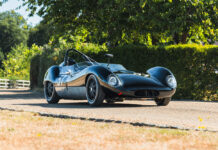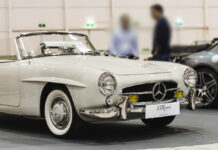Broad Arrow Private Sales is offering this 1932 Alfa Romeo 6C 1750 Series V Gran Sport Figoni Roadster for sale.

Chassis No. 10814377
Engine No. 10814377
Alfa Romeo’s 6C models, especially in their ultimate supercharged forms, remain one of the most storied and revered European sports cars of the pre-war era, offering both elegance and a level of all-round performance that put the model as a top contender for wealthy sportsmen and racing drivers looking to make their mark in competition. Indeed the model was so successful that it won outright in many of the major European road races of the day, including the Mille Miglia, Monza Grand Prix, Spa 24 Hours, and the Brooklands Double Twelve.
Vittorio Jano had conceived the 6C, a model intended to be “a brilliantly performing lightweight car”, and indeed he accomplished the task, squeezing 85-horsepower from the car’s remarkable and technically advanced straight six-cylinder engine. The combination of a twin overhead cam design fitted with a Roots-type supercharger and utilizing a hemispherical combustion chamber, mated to a lightweight chassis, created a car that boasted a superb power-to-weight ratio and offered excellent roadholding and handling dynamics.
The 6C chassis was offered in bare form for a variety of custom coachwork applications, the most well known of these being the creations of Zagato and Touring. Zagato’s models are the most revered, owing no doubt to Tazio Nuvolari’s stuff-of-legend drive in the 1930 Mille Miglia, wherein he turned off the headlights in the middle of the night and drove like a madman to catch and eventually pass the presumed winner Achille Varzi on his way to outright victory in his 6C 1750 GS Zagato Spider.
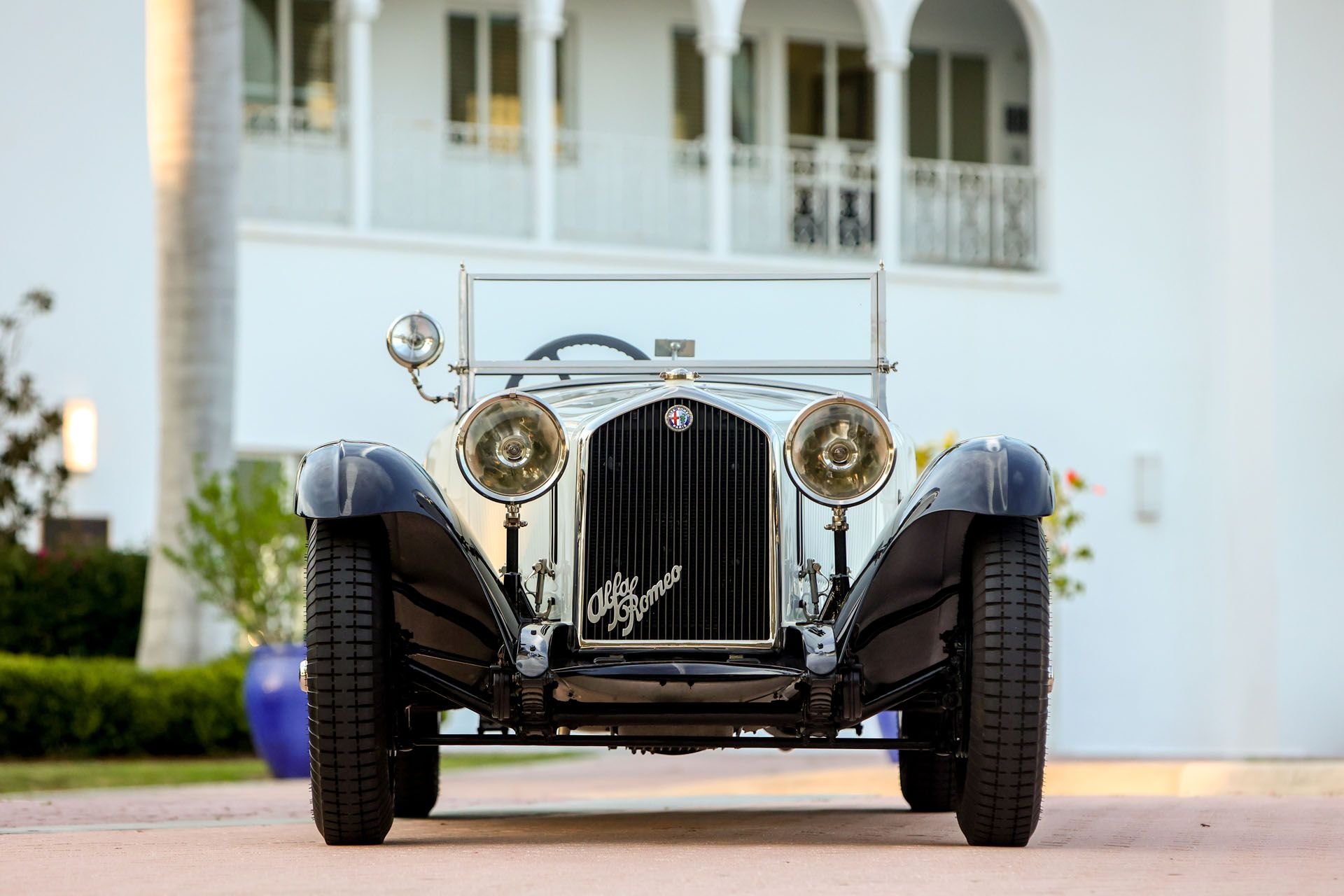
A small number of chassis were supplied to Carrosserie Figoni, a French firm founded by an Italian expat. The firm would eventually partner with Ovidio Falaschi to create some of the most incredible Art Deco designs ever applied to an automobile chassis, notably Talbot-Lago’s ‘Teardrop’ Coupe. While Figoni is not a coachbuilder most enthusiasts readily associate with Alfa Romeo, it is seldom noted that the very first Figoni-bodied Alfa Romeo chassis would be an 8C 2300 that would go on to achieve an overall victory at the Le Mans 24 Hours in 1932, co-driven by none other than Luigi Chinetti. Chinetti was also acting as an independent distributor for Alfa Romeo in these years, offering 6C and 8C models through his Parisian agency.
Around this time, the car presented here, chassis no. 10814377, would be delivered to France, entering Figoni’s workshop for fitment of an attractive two-seater Roadster body with flowing fender lines, a fold-flat windscreen, and an elegant two-tone color palette. A period Figoni advertisement featured the model, describing it as a “Phaeton Sport”. Significantly, this chassis is thought to be the very first of 30 or so Series V Gran Sport chassis produced in 1932, this being the opinion of noted 6C historian Angela Cherrett as well as Luigi Fusi.
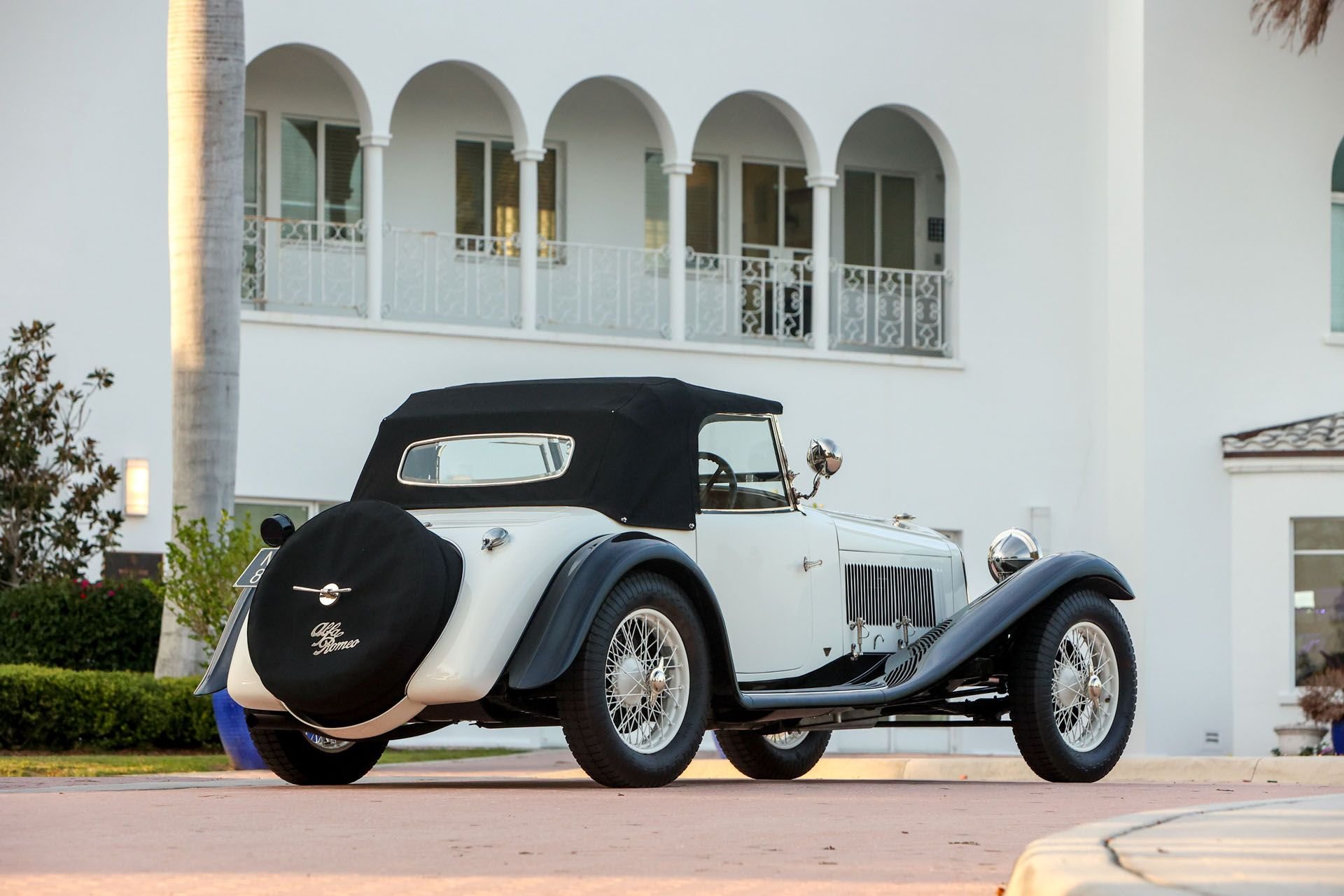
As one of the so-called “Paris Alfas”, 10814377 displays several unique features including French language data plates (reading “Grand” instead of “Gran”), an Alfa Romeo Paris radiator badge, and French language wheel knockoffs. Adjustable shock absorbers are another seldom seen feature.
Simon Moore’s previous research suggests that the car’s first owner may have been Pierre-Louis Dreyfus, who among many other famous exploits raced in the Le Mans 24 Hours eleven times and was a close friend of Chinetti’s. It is understood that the car was registered in Paris until August 1934, then transferring to an owner based in Toulouse, who kept the car only a few months before selling it in December 1934 back into Paris-based ownership, where it was re-registered with the number plate “9084 RJ 4”.
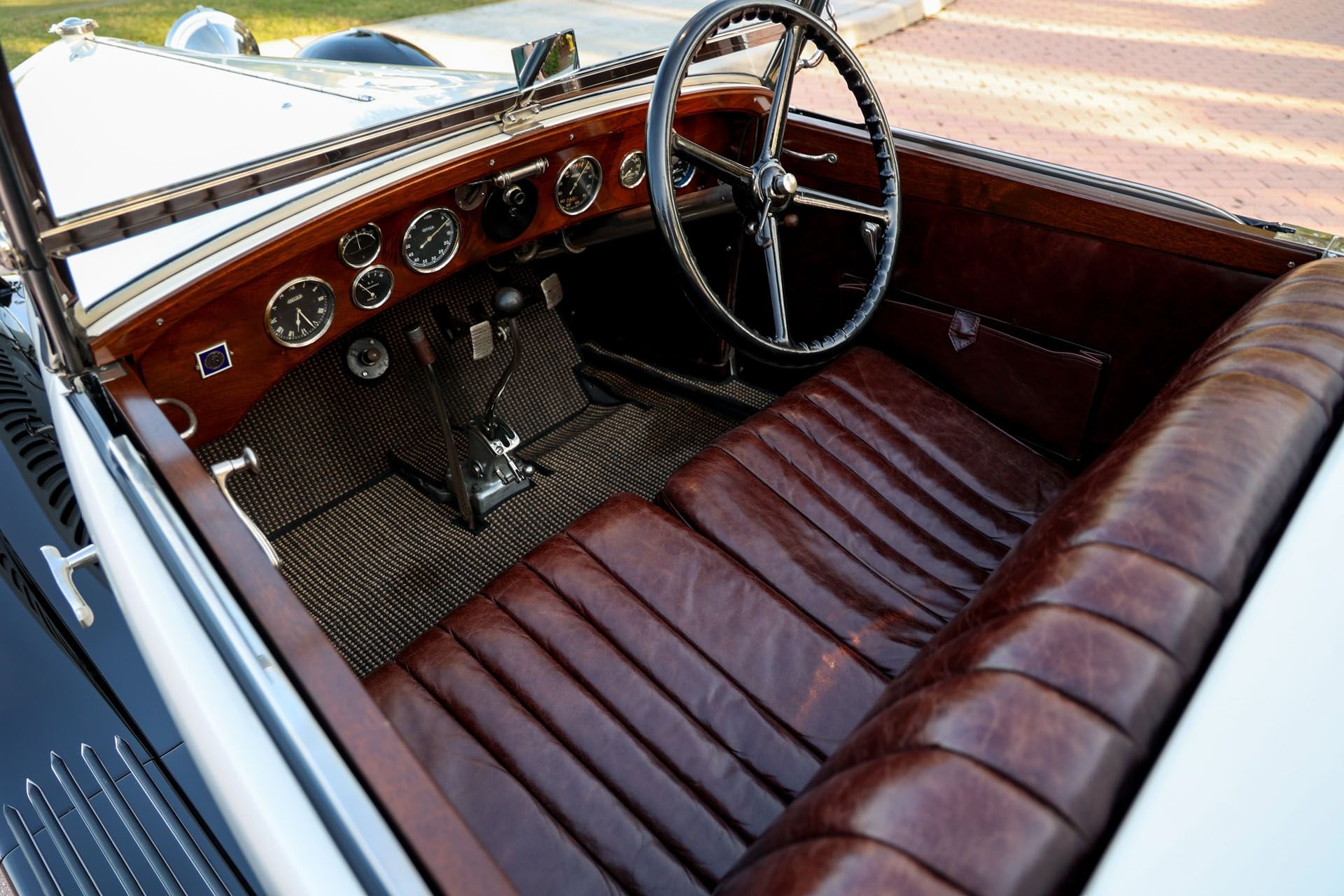
Remarkably the Alfa survived World War II, staying in Paris through late 1947 before moving to the sunny southern city of Cannes, where a brief ownership by Yvonne Chassagne was succeeded by longer-term ownership by David L. Jayet, an engineer who lived in the area. The thought of driving a supercharged Alfa Romeo along the French Riviera in those happy post-war days is indeed a very romantic one, and it is not hard to imagine the thrill of a plein ciel escape for a weekend in St-Tropez.
Mr. Jayet would keep the car until around 1953, and later the car would migrate to the United States, landing in Florida where it would live with a succession of three known owners from approximately the late 1950s until 1974. Upon the passing of William S. Comer of Lake Park, Florida, the Alfa would be acquired by Bugatti collector Gene Cesari of Allentown, Pennsylvania, in whose possession the car remained mostly static for the next two decades. In the mid-1990s the decision was made to restore the car, with mechanical work entrusted to Chris Leydon. However, prior to the completion of the restoration the Alfa was sold in late 1997 to Sir John Venables-Llewelyn of Wales, who engaged Alfa specialist Jim Stokes to complete the previously begun work.
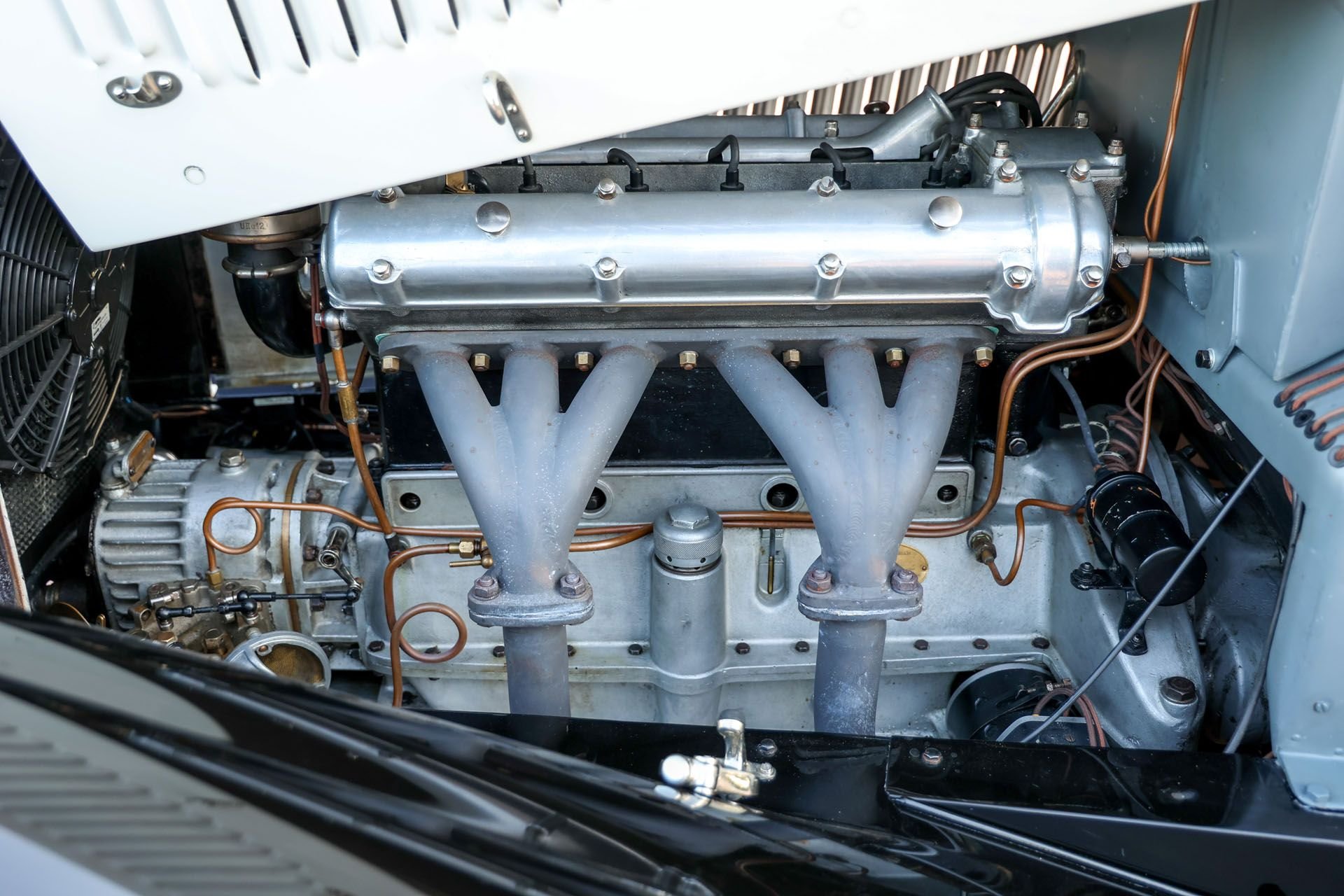
The supercharged Alfa would remain in this ownership until 2014, when it passed to a new owner who envisioned preparing the car to an even higher standard. A careful restoration was commenced by Patrick Balkeney-Edwards highly regarded UK-based outfit; work included returning the car to the two-tone color scheme seen in Figoni’s period advertisement, while the upholstery was re-trimmed by Graham Moss.
Acquired by the previous owner in 2017, the Alfa was carefully maintained by the specialists at Continental Autosports in Hinsdale, Illinois. It was exhibited at the Pebble Beach Concours d’Elegance in 2021, where it was awarded 3rd place against heavy competition in Class J-1: European Classic Sports. Aiding in this triumphant result was no doubt the fact that the Alfa had completed the Pebble Beach Tour d’Elegance, proving its real ability as a drivable pre-war motorcar alongside its award-winning level of restoration and inherent elegance. Acquired by the current owner at Broad Arrow Auctions, The Amelia Auction in 2023, the Alfa continued to impress with the addition of approximately 150 miles and light servicing since then.
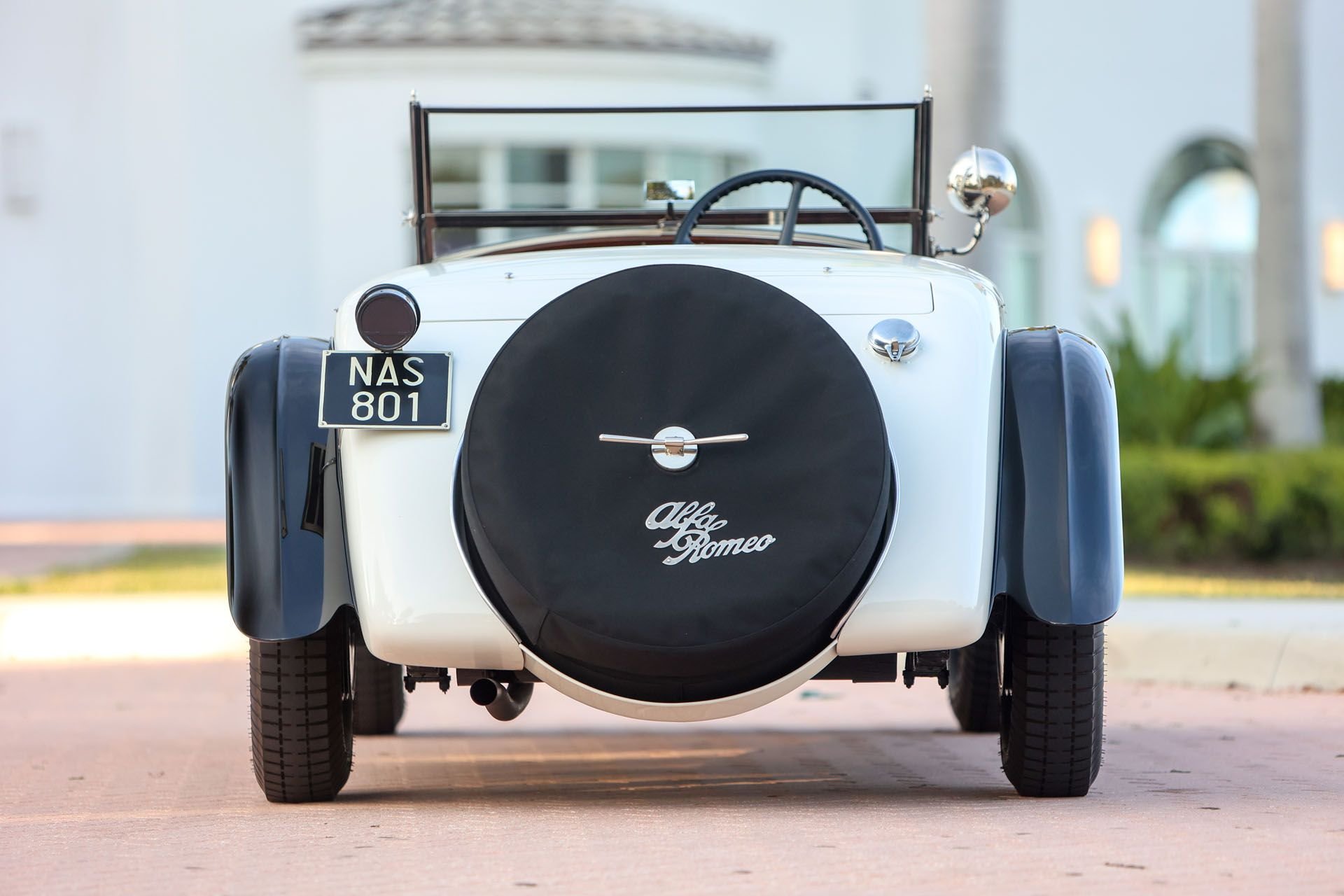
Rarely does such a pedigreed and attractive pre-war motorcar come to market; this one represents the pinnacle of Vittorio Jano’s genius 6C design, with special coachwork, its original engine, an extensive historical record including research by some of the marque’s most prolific historians, and a stunning Concours award winning restoration. It is an automobile poised to delight on every sensory level and will be a standout amongst any collection of fine motorcars.




